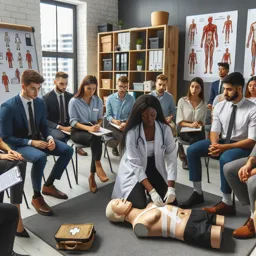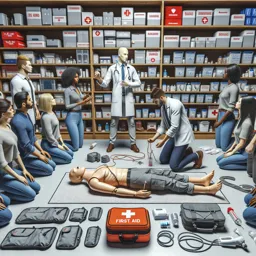Introduction
Exploring the great outdoors brings a sense of adventure and connection with nature. However, with the thrill of wilderness activities comes the risk of injuries and medical emergencies in remote areas, far from immediate medical help. Understanding wilderness first aid equips you with vital skills to handle emergencies and potentially save lives before professional help arrives.
What is Wilderness First Aid?
Wilderness first aid refers to the initial care provided to someone who becomes ill or injured in a remote environment, where medical facilities may not be accessible for hours or even days. This form of first aid goes beyond basic urban first aid by considering resource limitations, extended care, and the challenges posed by rugged or harsh conditions.
The Fundamentals of Wilderness First Aid
- Assessment and Scene Safety: Always ensure the scene is safe for both the rescuer and the injured person. Assess the environment for hazards like unstable terrain, wildlife, or adverse weather.
- Primary Survey: Follow the basic ABCs—Airway, Breathing, and Circulation. Address life-threatening issues immediately.
- Secondary Survey: Perform a thorough head-to-toe assessment. Gather information about the patient’s history, medications, allergies, and mechanism of injury.
Common Wilderness Injuries and How to Respond
Bleeding and Wounds
Stop bleeding with direct pressure using a clean cloth. In case of severe bleeding, apply a tourniquet if trained to do so. Clean and dress wounds with available materials to prevent infection.
Fractures and Sprains
Immobilize the injury using makeshift splints, such as sticks and clothing. Avoid moving the injured limb unnecessarily. Use triangular bandages or strips of fabric to secure splints.
Hypothermia and Heat Illness
Recognize signs of temperature-related emergencies. For hypothermia, insulate the person from the ground, provide warm, dry clothing, and warm fluids if conscious. For heat illness, move the person to shade, cool the body with wet cloths, and offer water if alert.
Bites and Stings
Clean the affected area, remove stingers if present, and monitor for allergic reactions. Elevate the area and apply a cool compress to reduce swelling.
Improvising with Limited Resources
Wilderness first aid often requires creativity. Multi-purpose items like bandanas, hiking poles, and sleeping pads can serve as splints, slings, or insulation. Always prioritize maintaining cleanliness to prevent infection.
Evacuation and Emergency Communication
Knowing when and how to evacuate is critical. Use a distress signal such as a whistle (three blasts) or ground symbols for aerial rescue. Carry a satellite phone, personal locator beacon, or two-way radio to maintain communication in remote areas.
Building Your Wilderness First Aid Kit
- Adhesive bandages and gauze
- Antiseptic wipes and ointment
- Medical tape and scissors
- Tweezers and safety pins
- Elastic bandages for sprains
- Space blanket
- Gloves and CPR mask
- Medications for allergies and pain relief
Conclusion
Preparedness is key for anyone venturing into the wilderness. By mastering wilderness first aid, you empower yourself and others to respond confidently in emergencies, making outdoor adventures safer and more enjoyable. Consider taking a certified wilderness first aid course to practice hands-on skills and ensure you’re ready for any situation nature throws your way.




























